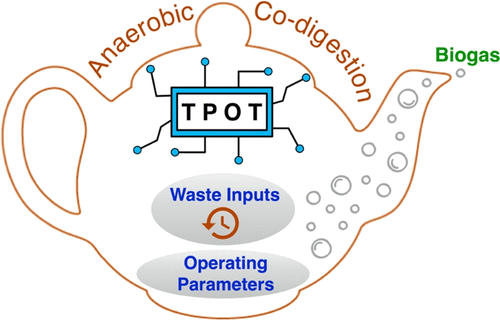当前位置:
X-MOL 学术
›
ACS Sustain. Chem. Eng.
›
论文详情
Our official English website, www.x-mol.net, welcomes your
feedback! (Note: you will need to create a separate account there.)
Tree-Based Automated Machine Learning to Predict Biogas Production for Anaerobic Co-digestion of Organic Waste
ACS Sustainable Chemistry & Engineering ( IF 7.1 ) Pub Date : 2021-09-16 , DOI: 10.1021/acssuschemeng.1c04612 Yan Wang 1, 2, 3 , Tyler Huntington 2, 3 , Corinne D. Scown 1, 2, 3, 4
ACS Sustainable Chemistry & Engineering ( IF 7.1 ) Pub Date : 2021-09-16 , DOI: 10.1021/acssuschemeng.1c04612 Yan Wang 1, 2, 3 , Tyler Huntington 2, 3 , Corinne D. Scown 1, 2, 3, 4
Affiliation

|
The dynamics of microbial communities involved in anaerobic digestion of mixed organic waste are notoriously complex and difficult to model, yet successful operation of anaerobic digestion is critical to the goals of diverting high-moisture organic waste from landfills. Machine learning (ML) is ideally suited to capturing complex and nonlinear behavior that cannot be modeled mechanistically. This study uses 8 years of data collected from an industrial-scale anaerobic co-digestion (AcoD) operation at a municipal wastewater treatment plant in Oakland, California, combined with a powerful automated ML method, Tree-based Pipeline Optimization Tool, to develop an improved understanding of how different waste inputs and operating conditions impact biogas yield. The model inputs included daily input volumes of 31 waste streams and 5 operating parameters. Because different wastes are broken down at varying rates, the model explored a range of time lags ascribed to each waste input ranging from 0 to 30 days. The results suggest that the waste types (including rendering waste, lactose, poultry waste, and fats, oils, and greases) differ considerably in their impact on biogas yield on both a per-gallon basis and a mass of volatile solids basis, while operating parameters were not good predictors of yield at this facility.
中文翻译:

基于树的自动化机器学习预测用于有机废物厌氧消化的沼气产量
众所周知,混合有机废物厌氧消化中微生物群落的动态非常复杂且难以建模,但厌氧消化的成功运行对于从垃圾填埋场转移高水分有机废物的目标至关重要。机器学习 (ML) 非常适合捕获无法机械建模的复杂和非线性行为。本研究使用从加利福尼亚州奥克兰市一家市政污水处理厂的工业规模厌氧共消化 (AcoD) 操作收集的 8 年数据,结合强大的自动化机器学习方法、基于树的管道优化工具,开发出一种更好地了解不同的废物输入和操作条件如何影响沼气产量。模型输入包括 31 个废物流的每日输入量和 5 个操作参数。由于不同的废物以不同的速度分解,该模型探索了归因于每个废物输入的一系列时间滞后,范围从 0 到 30 天。结果表明,废物类型(包括提炼废物、乳糖、家禽废物以及脂肪、油和油脂)在每加仑基础和挥发性固体质量基础上对沼气产量的影响有很大不同,同时操作参数不是该设施产量的良好预测指标。
更新日期:2021-09-27
中文翻译:

基于树的自动化机器学习预测用于有机废物厌氧消化的沼气产量
众所周知,混合有机废物厌氧消化中微生物群落的动态非常复杂且难以建模,但厌氧消化的成功运行对于从垃圾填埋场转移高水分有机废物的目标至关重要。机器学习 (ML) 非常适合捕获无法机械建模的复杂和非线性行为。本研究使用从加利福尼亚州奥克兰市一家市政污水处理厂的工业规模厌氧共消化 (AcoD) 操作收集的 8 年数据,结合强大的自动化机器学习方法、基于树的管道优化工具,开发出一种更好地了解不同的废物输入和操作条件如何影响沼气产量。模型输入包括 31 个废物流的每日输入量和 5 个操作参数。由于不同的废物以不同的速度分解,该模型探索了归因于每个废物输入的一系列时间滞后,范围从 0 到 30 天。结果表明,废物类型(包括提炼废物、乳糖、家禽废物以及脂肪、油和油脂)在每加仑基础和挥发性固体质量基础上对沼气产量的影响有很大不同,同时操作参数不是该设施产量的良好预测指标。











































 京公网安备 11010802027423号
京公网安备 11010802027423号